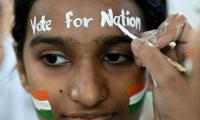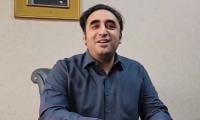There are 4,416 cities in the world with a population of over 150,000. Question: Name the city in which dozens of lives are lost from electrocution whenever it rains. Hint: This city is not in Africa or South America or Antarctica. Hint: This city is in Asia. Answer: Karachi (there are no prizes in guessing it right).
Also read: Police given 14 days to arrest top KE officials over electrocution deaths
The average annual rainfall in Karachi is a mere 6.8 inches. Quibdo in Colombia gets an average of 288 inches of rainfall every year. No one gets electrocuted in Quibdo. Monrovia, the capital city of Liberia (West Africa), has a population of over a million and gets 182 inches of rainfall each year. No one gets electrocuted in Monrovia. Hilo in Hawaii gets 127 inches with 272 rainy days. No one gets electrocuted in Hilo. The city of Cayenne in South America gets 147 inches. No one gets electrocuted in Cayenne. Imagine: Karachi with 6.8 inches a year and dozens get electrocuted.
Related: Three friends who grew up together and left the world together
This surely is criminal negligence. This is man-made not God-given. Is anyone holding the National Electric Power Regulatory Authority (Nepra) responsible? What about business ethics? Let us say there’s a city that has a literacy rate of 20 percent. Should pharmaceutical companies be selling expired medicines to the other 80 percent population of that city? Four dozen precious lives have been lost to electrocution. What has the empire been doing all these years? What about periodic inspections of insulators?
In 2012, Engineer Arshad Abbasi’s ‘Appraisal of KESC in post-privatization period’ was published. This masterpiece is an in-depth analysis undertaken with extraordinary skill. KESC’s privatization is a case-study in how not to privatize. Question: Why did our government privatize KESC? Answer: To reduce the burden of subsidies. The fact is that when the KESC was being run by the government, subsidy stood at Rs9 billion. The fact is that after privatization the KESC’s subsidy went up to Rs76 billion in 2013. The fact is that the government has doled out a colossal Rs400 billion subsidies to the KESC (now K-Electric) after privatization.
Is Nepra, the so-called regulator, subsidizing ‘death by electrocution’? What really is K-Electric’s business model? Is it extracting Rs400 billion worth of ‘subsidies’ from the treasury? Has Nepra ever done an audit as to where those Rs400 billion went? Yes, our government also sells 600 MW to K Electric-on the cheap. Lo and behold, K-Electric charges Rs20.70 per unit and Rs21.60 per units in peak hours.
In April, Irfan Ali, secretary power, told a parliamentary committee that “K-Electric owes Rs125 billion which includes Rs90 billion of SSGC and Rs35 billion of NTDC”. The question here is: why did these government-controlled entities gave away hundreds of billions of public money to a private operator? Is this a case of public money, private greed? Yes, K-Electric has counter-claims. K-Electric claims that it’s “outstanding receivables stand at Rs158.8 billion”.
What a royal mess – dirty and ugly.
The writer is a columnist based in Islamabad.
Email: farrukh15@hotmail.com Twitter: @saleemfarrukh
A woman walks past a building of the International Monetary Fund. — AFP/FileThe annual and spring meetings of the...
Late Benazir Bhutto's daughter Asifa Bhutto Zardari addresses the Christian community in Bihar Colony on January 23,...
Representational image. — PexelsWater is an important scarce natural resource that is required for several everyday...
Pakistani employees of online marketplace company Kaymu at work in Karachi. — AFP/FileThe true spirit of development...
India uses Afghanistan as a backstage area to carry out terrorist attacks against Pakistan
Another report by the Pakistan Institute of Peace Studies states that 78 per cent of attacks have been carried out by...







